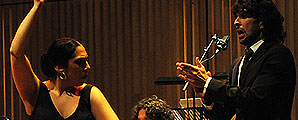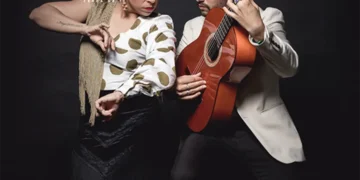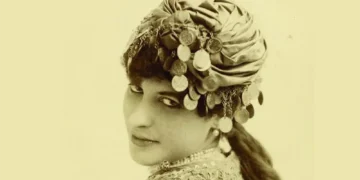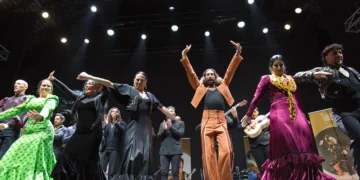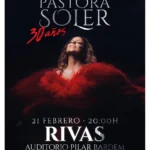|
FLAMENCO BIENNALE III |
||||||
| Photo Gallery by Ana Palma
Text: Estela Zatania Since January 21st and through to the 30th, we’ve been following the action at the Dutch Flamenco Bienal in its third edition which has just wrapped up. Ten days of high emotion and new experiences, new friends and encounters with old ones, presentations and exhibits, workshops, anecdotes and the occasional welling up of tears as well. In a festival that champions the concept of cross-genre experimentation and fusion, we’ve seen a wide range of tendencies, from the most classic or traditional, to the most avant-garde. The main presentation of the closing day was titled “Flamenco Sin Fin”, ‘unlimited flamenco’, and if ever a definition of what flamenco is and is not were required, it is here and now with this collection of works of various composers played by the Nieuw Ensemble under the direction of Ed Spanjaard. It’s fashionable these days to reject all definitions of flamenco because, we are told, they put artificial limits to creativity, and music must always be absolutely free. So I wonder: is the whistle of my teapot flamenco?… is the computer on which I’m now writing flamenco?…is my cat Rosalía (born in Triana) flamenco? Or the most important question of all: if everything is flamenco, does flamenco even exist? Way too profound for a run-of-the-mill flamenco fan to contemplate on a Monday morning, so I’ll just offer some thought tapas that occurred to me in the darkness of the theatre after the lights were dimmed. It’s possible no single element is a prerequisite in order to achieve the unmistakable aroma of “flamenco”. But when you remove compás, familiar scales, forms and structures that normally come together to yield what most people would call “flamenco”, it becomes difficult to justify the inclusion of this music in a festival of this nature, no matter how open-minded its aims might be. There is the sound of castanets, there are guitars, there is a cajón, there is dancing by the wonderful Fuensanta la Moneta and there is the singing of Arcángel. But the overwhelmingly contemporary nature of the music, at times monotonous and indigestible, takes care of purging the ambience of any possible trace of flamenco. There are also moments of bulerías compás, and they constitute the most scientific proof yet that it takes more than measures of twelve to make flamenco. There are also pieces of siguiriyas with dance, trilla, soleá… Generally speaking, all interesting sounds. Mauricio Sotelo, composer of “Muerte Sin Fin” received Spain’s prestigious National Music Prize in 2001, and therefore deserves our greatest respect. But having attended his brief spoken introduction to the concert, it’s clear to me he has relatively little contact with the flamenco ambience, and perhaps for this reason the artform is eclipsed in his work. La Moneta does what she can, but appears to be groping for something to latch onto. Arcángel’s cante is somewhat more effective, this singer is accustomed to experimentation, and in fact he puts the most flamenco touch, although unfortunately, it continues to be a minuscule part of the whole. Oddly enough, the most convincing component was a singer from Azerbaijan, Zabit Nabizade; although he did not sing flamenco, he managed to attract the attention of the duendes who sat listening attentively. Later in the evening at the Bimhuis café cantante, Diego del Morao brought us home to flamenco territory with his recital that included rondeña, siguiriyas taken at a fast clip, tangos, bulerías and more bulerías with the special collaboration of singer Jesús Méndez and dancer Joaquín Grilo, in addition to backup musicians Ignacio Cintado and Bernardo Parrilla, and the percussion of Luis Carrasco and Pedro Navarro. And thus ends this admirable festival, still young but on its way to becoming a classic, and the moving force behind it all, director Ernestina Van de Noort, is already looking ahead enthusiastically to the next edition two years from now.
|
Descubre más desde Revista DeFlamenco.com
Suscríbete y recibe las últimas entradas en tu correo electrónico.


